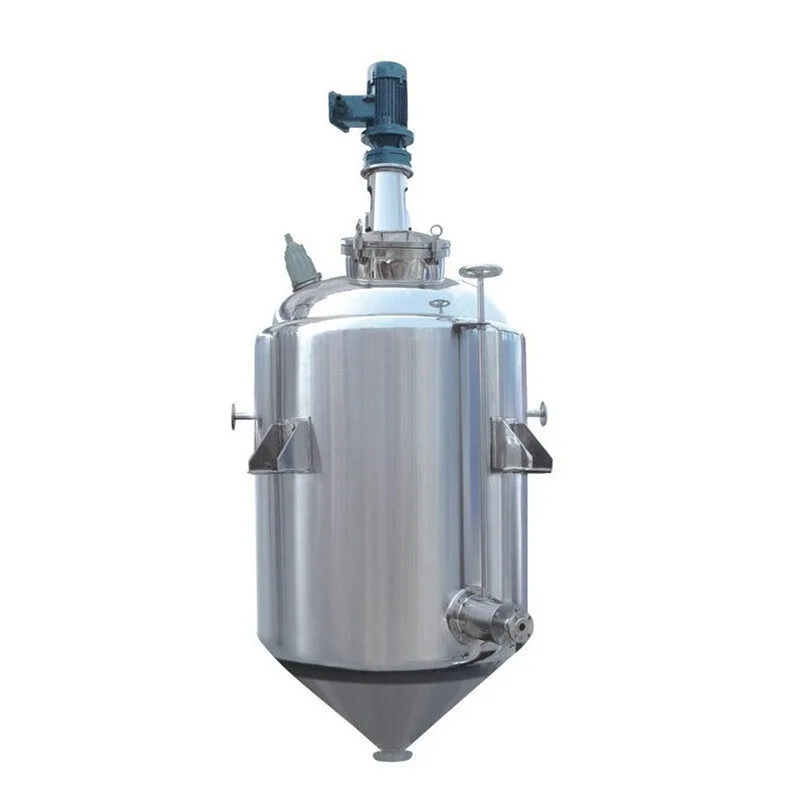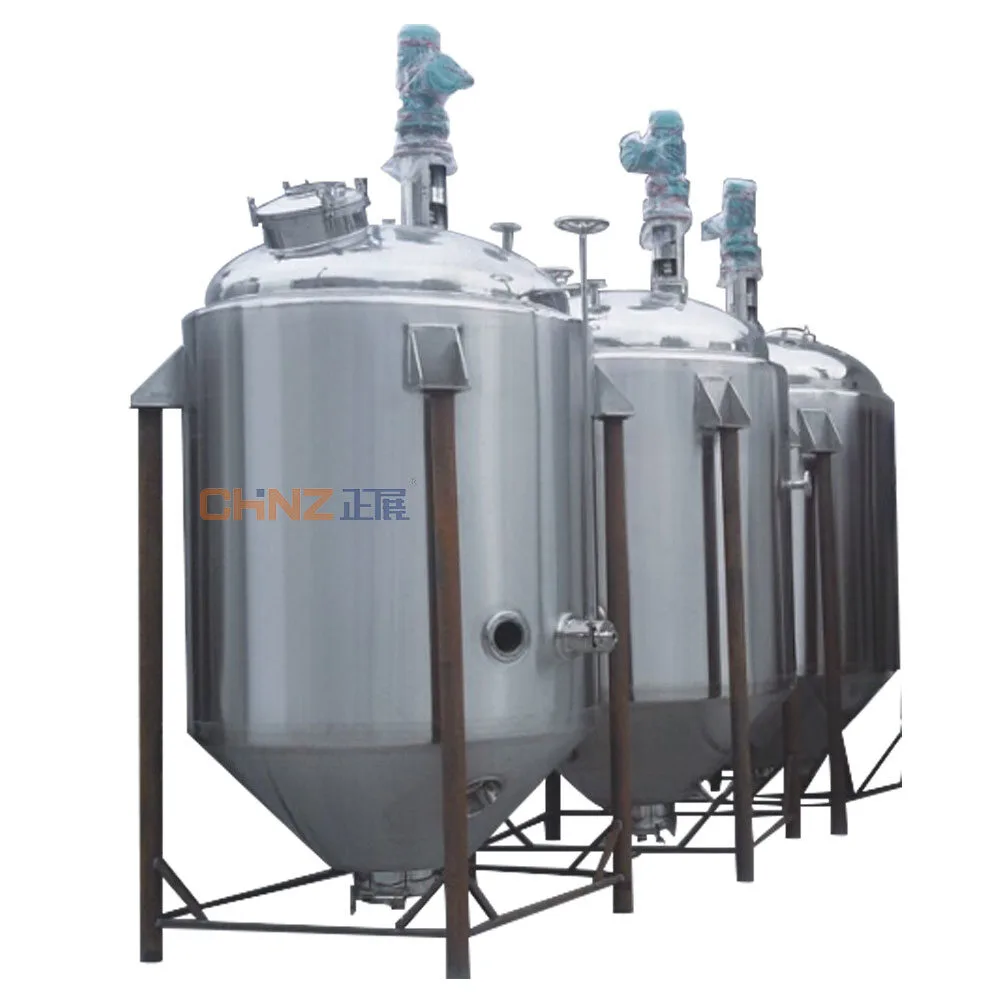

Alcohol Precipitation Tank is a specialized (settling-type) liquid-solid separation device designed primarily for the alcohol precipitation process (also known as alcohol sinking) in industries like traditional Chinese medicine (TCM), pharmaceuticals, food, and healthcare. Its core function is to enhance the purity and clarity of extracts by adding alcohol to concentrated solutions, facilitating the precipitation and separation of non-alcohol soluble components like starch and proteins
Integrated Filtration: Some models include a built-in filtration box in the discharge line, equipped with screens or filter layers to further ensure the purity of the discharged supernatant.
Automated Control and Monitoring (Optional): Systems can be equipped with Programmable Logic Controllers (PLCs), flow meters, and alarms. These monitor the process and alert operators when the supernatant extraction is complete.
Enhanced Cooling Systems: For related alcohol storage, technologies like internal rotating cooling coils are used to maintain low, uniform temperatures, minimizing alcohol loss due to volatilization
High Efficiency Separation: Effectively separates solids and liquids, improving product clarity and quality.
Temperature Control: The jacketed design allows precise temperature management, which is crucial for optimal precipitation.
GMP Compliance: Designed and manufactured in accordance with GMP standards for pharmaceutical production, featuring sanitary finishes and clean-in-place (CIP) capabilities.
Safety: Uses explosion-proof motors and mechanical seals for safe operation with volatile solvents like alcohol.
Durability: Robust stainless steel construction ensures a long service life.
Operational Flexibility: Suitable for both alcohol precipitation and water precipitation processes
Pharmaceutical Industry: Primarily for purifying TCM extracts and isolating active pharmaceutical ingredients (APIs).
Food & Beverage Industry: Processing of extracts and concentrates.
Healthcare & Biotechnology: Production of health products and purification of biological materials.
Chemical Industry: For separation processes involving suspensions and slurries.
Proven Expertise: Manufacturers often have years of experience in designing and building specialized equipment for the pharmaceutical and food sectors.
Quality Assurance: The use of certified materials and adherence to international standards ensure product reliability and compliance.
Process Optimization: Features like fine-tuned discharge and temperature control lead to higher yields and better product consistency.
Reduced Operational Risk: Safety features and automated controls minimize operator error and enhance workplace safety.
Cost-Effectiveness: Efficient separation and solvent recovery capabilities contribute to lower long-term operating costs.
The tank is typically constructed with a cylindrical body, an elliptical head, and a conical bottom that aids in the complete discharge of precipitates. Key components include:
Jacketed System: The outer jacket allows for the circulation of cooling water or chilled brine to control the process temperature, enabling both normal temperature and low-temperature freezing operations.
Agitation System: Equipped with a stirrer (e.g., paddle or three-blade type) driven by a motor to ensure uniform mixing of the concentrate and alcohol.
Special Discharge Mechanism: Features a fine-tuning rotary liquid outlet pipe or a floating-type discharger to efficiently draw off the supernatant (clear liquid) without disturbing the settled solids.
Materials: Manufactured entirely from high-quality stainless steel, typically SUS304 or SUS316L, with internal surfaces polished to a mirror or satin finish to meet GMP standards and ensure easy cleaning
Sitemap
Extraction Equipment Suppliers, vacuum concentration tank manufacturers, Emulsifying Mixing Tank, China Jacketed Kettle, jacketed kettle manufacturers, Herbal Extraction Equipment.
